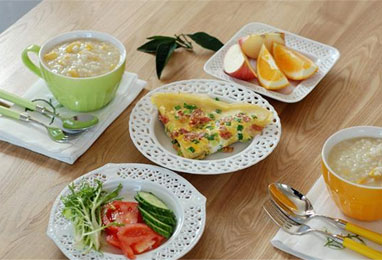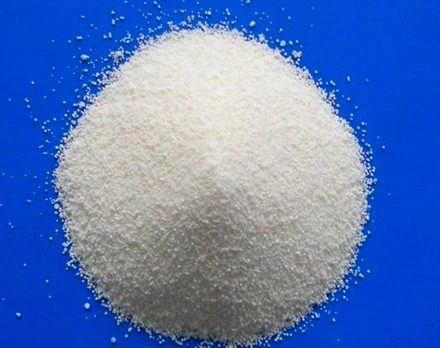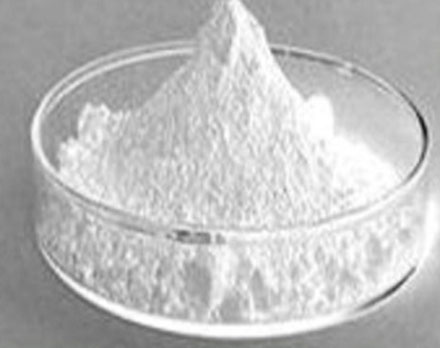Industry Development of Crystalline Fructose
Industry Development of Crystalline Fructose
Crystalline fructose is a monosaccharide that is an isomer of glucose, containing 6 carbon atoms. Its structural formula is C6H12O6, and its sweetness is 1.2-1.8 times that of sucrose. It naturally exists in the juice of fruits, honey, and grains.
I. Global market: With the increasing demand for low calorie, natural sweeteners among global consumers, crystalline fructose has become the preferred choice for health conscious consumers due to its high sweetness and low blood sugar response characteristics. Especially in developed markets such as North America and Europe, the demand for low sugar/sugar free products is driving industry growth. Data shows that in 2019, the global crystalline fructose industry achieved sales of US$299.28 million, and by 2024, the industry's sales had grown to US$551.29 million, with a compound annual growth rate of 13.0%.
II. Chinese domestic market: In recent years, the crystalline fructose industry in China has experienced rapid development. Due to its low glycemic index after consumption, crystalline fructose does not rely on human insulin and does not promote insulin to break down pancreatic enzymes. Therefore, it does not cause an increase in blood sugar in the human body, making it very suitable for people who are sensitive to blood sugar and for use in sugar free foods.
Meanwhile, crystalline fructose also has the property of preventing dental caries, which makes it widely used in children. In addition, crystalline fructose is widely used in functional beverages, preserved fruits, high-end pet food, health food, fruit wine, fruit vinegar brewing and other industries. The sugar consumption in these industries is considerable, which to some extent drives the growth of demand for crystalline fructose. Data shows that the market size of China's crystalline fructose industry has grown from 103 million yuan in 2019 to 196 million yuan in 2024.
III. Industry chain: From the perspective of the industry chain, the upstream production raw materials of the crystalline fructose industry mainly include crops such as corn and sugarcane. In addition, fruits, honey, and Asteraceae plants also contain abundant fructose, which can be used as raw materials for extracting high-purity fructose. Midstream refers to the production and processing stage of crystalline fructose. Downstream refers to the application areas of crystalline fructose, such as food, beverages, pharmaceuticals, and health products.
IV. Market Trends:
1. The particle size of crystalline fructose directly affects its dissolution rate, taste, and application effect in different products. With the continuous advancement of particle size control technology, manufacturers will be able to more accurately adjust the size of fructose crystals to meet various application needs, such as beverages, baking, and other fields, further enhancing product diversity and market adaptability.
2. In the future, crystalline fructose will not only continue to deepen its application in traditional food and beverage fields, but also play a role in more fields such as medicine and health products. In addition, with the development of technology and in-depth research on the characteristics of crystalline fructose, crystalline fructose may be applied in some emerging fields. For example, in pet food, considering the health needs and taste preferences of pets, crystalline fructose may be used as a high-quality sweetener or functional ingredient.
3. The production technology of crystalline fructose requires high precision, especially in controlling purity and crystallization process. In the future, companies in the industry will continue to strengthen their research and development efforts, actively promote the improvement of production technology for crystalline fructose, in order to improve production efficiency and reduce energy consumption; At the same time, ensure the high quality and stability of each batch of products to meet the growing market demand.
-
Inulin
-
Polydextrose
-
Resistant Dextrin
- Trehalose
- Resistant Dextrin(Soluble Corn Fiber)
- Resistant Dextrin(Soluble Corn Fiber)(Powder)
- Resistant Dextrin(Soluble Tapioca Fiber)(Powder)
- Resistant Dextrin(Soluble Tapioca Fiber)(Liquid)
- Resistant Maltodextrin Powder
- Resistant Maltodextrin Powder (Liquid)
- Organic Resistant Dextrin Powder (Corn Type) 70%
- Organic Resistant Dextrin Powder (Corn Type) 90%
- Organic Resistant Dextrin Powder (Tapioca Type) 70%
- Organic Resistant Dextrin Powder (Tapioca Type) 90%
- Organic Resistant Dextrin Syrup (Corn Type) 70%
- Organic Resistant Dextrin Syrup (Corn Type) 90%
- Organic Resistant Dextrin Syrup (Tapioca Type) 70%
- Organic Resistant Dextrin Syrup (Tapioca Type) 90%
- Organic Resistant Maltodextrin Powder (Corn Type) 70%
- Organic Resistant Maltodextrin Powder (Tapioca Type) 70%
- Organic Resistant Maltodextrin Syrup (Corn Type) 70%
- Organic Resistant Maltodextrin Syrup (Tapioca Type) 70%
- Organic Soluble Corn Fiber Powder 70%
- Organic Soluble Corn Fiber Powder 90%
- Organic Soluble Corn Fiber Syrup 70%
- Organic Soluble Corn Fiber Syrup 90%
- Organic Soluble Tapioca Fiber Powder 70%
- Organic Soluble Tapioca Fiber Powder 90%
- Organic Soluble Tapioca Fiber Syrup 70%
- Organic Soluble Tapioca Fiber Syrup 90%
- Resistant Dextrin Powder (Corn Type) 70%
- Resistant Dextrin Powder (Corn Type) 90%
- Resistant Dextrin Powder (Tapioca Type) 70%
- Resistant Dextrin Powder (Tapioca Type) 90%
- Resistant Dextrin Syrup (Corn Type) 70%
- Resistant Dextrin Syrup (Corn Type) 90%
- Resistant Dextrin Syrup (Tapioca Type) 70%
- Resistant Dextrin Syrup (Tapioca Type) 90%
- Resistant Maltodextrin Powder (Corn Type) 90%
- Resistant Maltodextrin Powder (Tapioca Type) 90%
- Resistant Maltodextrin Syrup (Corn Type) 90%
- Resistant Maltodextrin Syrup (Tapioca Type) 90%
- Soluble Corn Fiber Powder 70%
- Soluble Corn Fiber Powder 90%
- Soluble Corn Fiber Syrup 70%
- Soluble Corn Fiber Syrup 90%
- Soluble Tapioca Fiber Powder 70%
- Soluble Tapioca Fiber Powder 90%
- Soluble Tapioca Fiber Syrup 70%
- Soluble Tapioca Fiber Syrup 90%
-
Dioscorea Opposita Dietary Fiber
-
Wheat Dietary Fiber
-
Oat Dietary Fiber
-
Polydextrose Powder (Conventional Type)
-
Polydextrose Powder (Special Type)
-
Polydextrose Powder (Sugar Free Type)
-
Polydextrose Powder (Type II)
-
Polydextrose Powder (Type III)
-
Polydextrose Syrup (Conventional Type)
-
Polydextrose Syrup (Refined Type)
-
Polydextrose Syrup (Special Type)
-
Polydextrose Syrup (Standard Type)
-
Polydextrose Syrup (Sugar Free Type)
- Fructo Oligosaccharide
-
Malt Oligosaccharide
- Isomalto-oligosaccharide 900 Powder
- Isomalto-oligosaccharide 900 Powder(Corn)
- Isomalto-oligosaccharide 900 Powder(Tapioca)
- Isomalto-oligosaccharide 900 Syrup
- Isomalto-oligosaccharide 900 Syrup(Tapioca)
- Isomalto-oligosaccharide 900 Liquid (Corn)
- Isomalto-oligosaccharide 900 Liquid (DP3)
- Isomalto-oligosaccharide 900 Liquid (Tapioca)
- Isomalto-oligosaccharide 900 Powder (Corn)
- Isomalto-oligosaccharide 900 Powder (DP3)
- Isomalto-oligosaccharide 900 Powder (Tapioca)
- Organic Isomalto-oligosaccharide 900 Liquid (Corn)
- Organic Isomalto-oligosaccharide 900 Liquid (DP3)
- Organic Isomalto-oligosaccharide 900 Liquid (Tapioca)
- Organic Isomalto-oligosaccharide 900 Powder (Corn)
- Organic Isomalto-oligosaccharide 900 Powder (DP3)
- Organic Isomalto-oligosaccharide 900 Powder (Tapioca)
- Xylo-oligosaccharide
- Galacto-oligosaccharide
-
Mannan Oligosaccharide
-
Isomaltulose Powder
-
Saigao Stachyose





